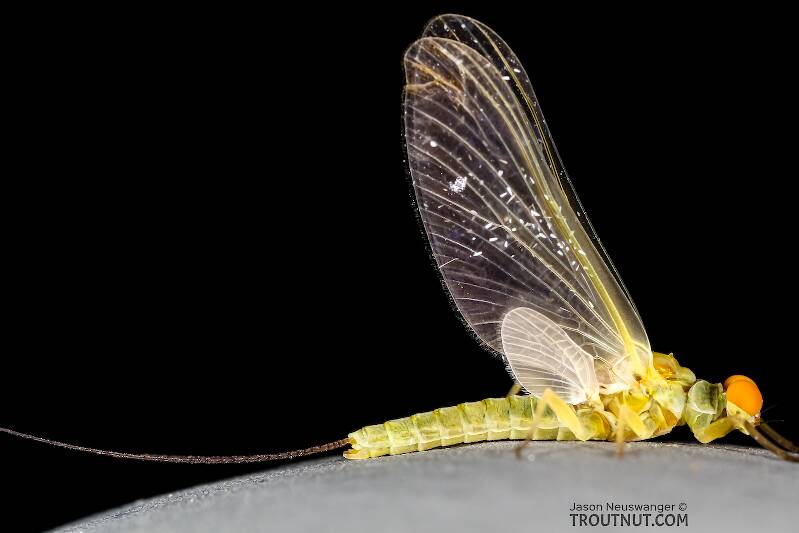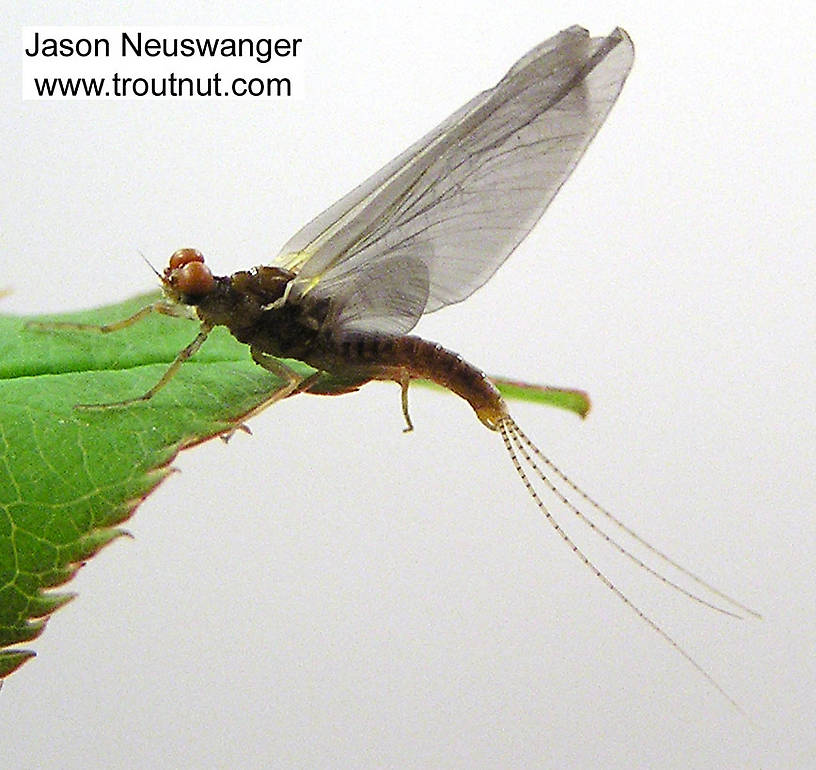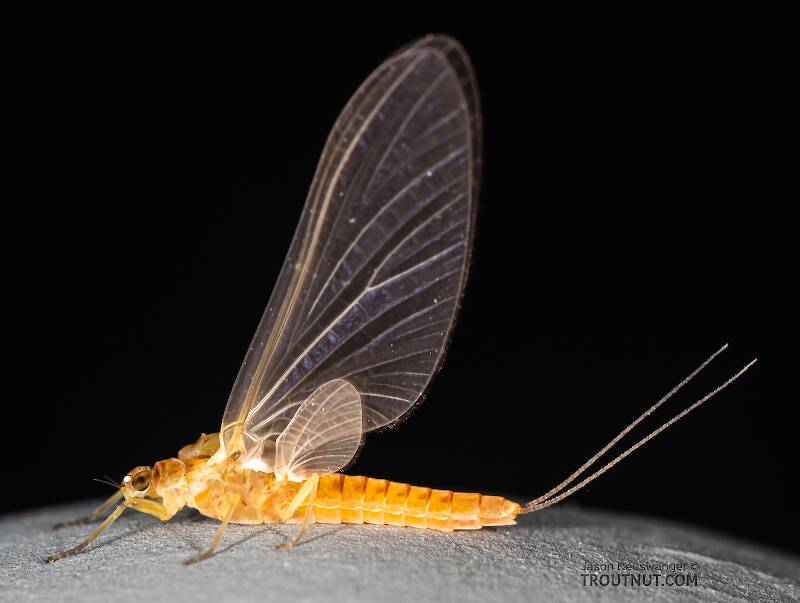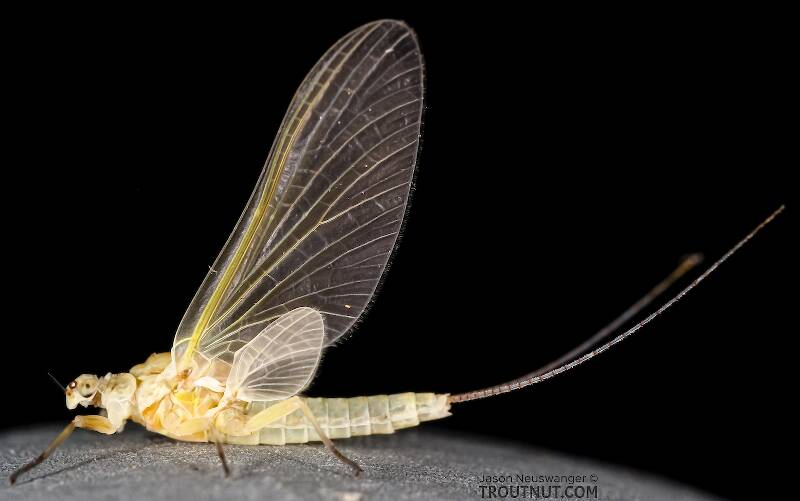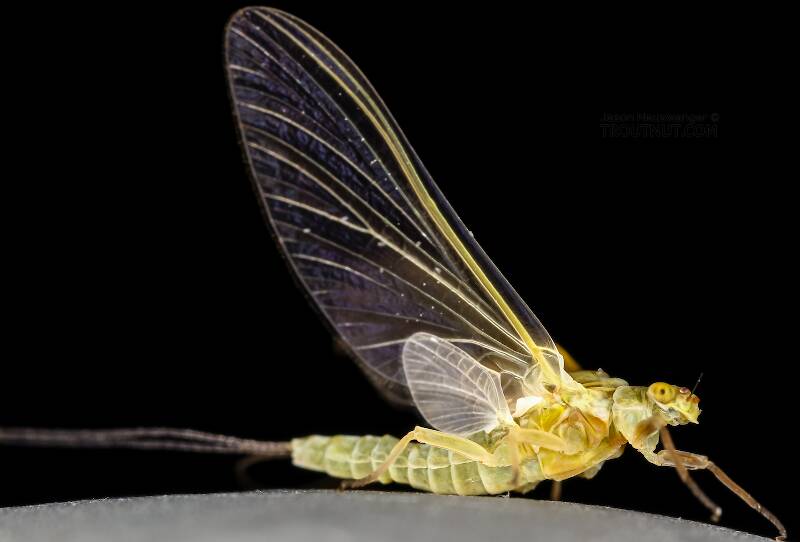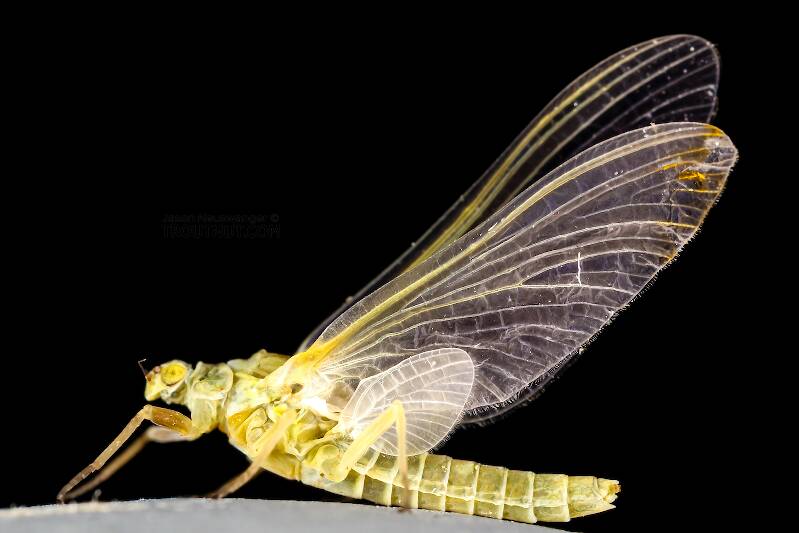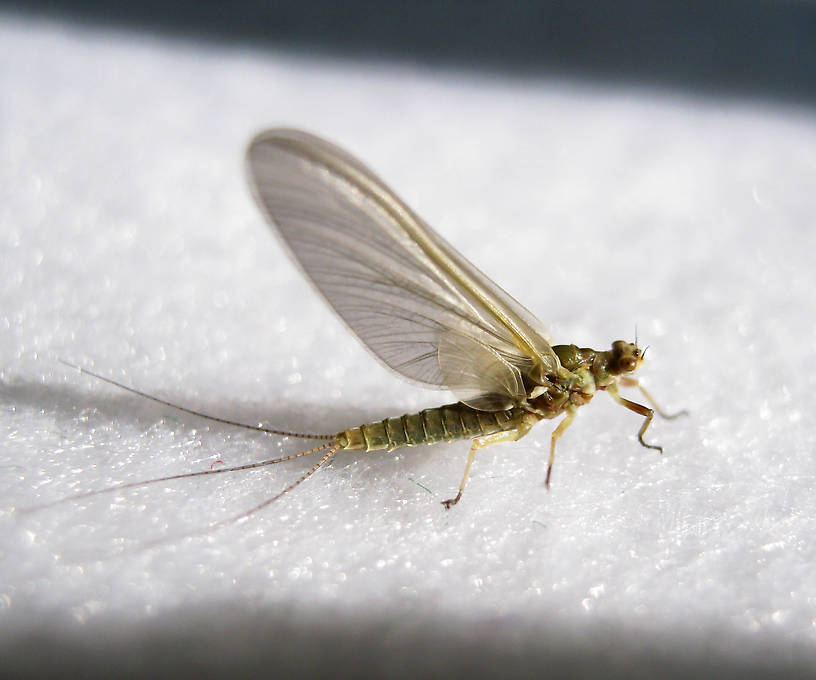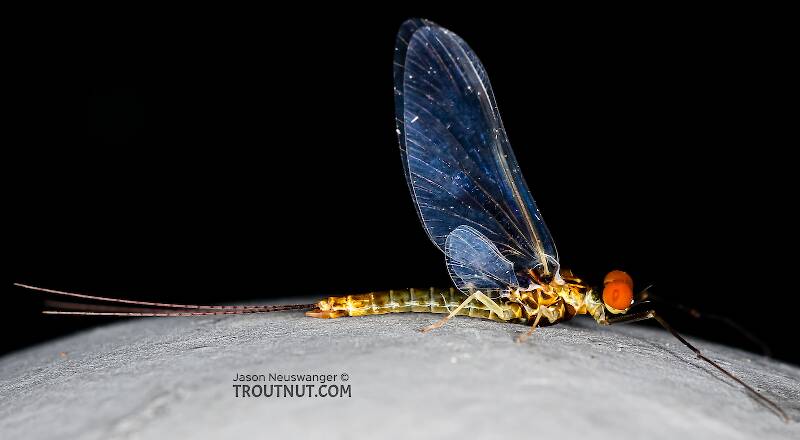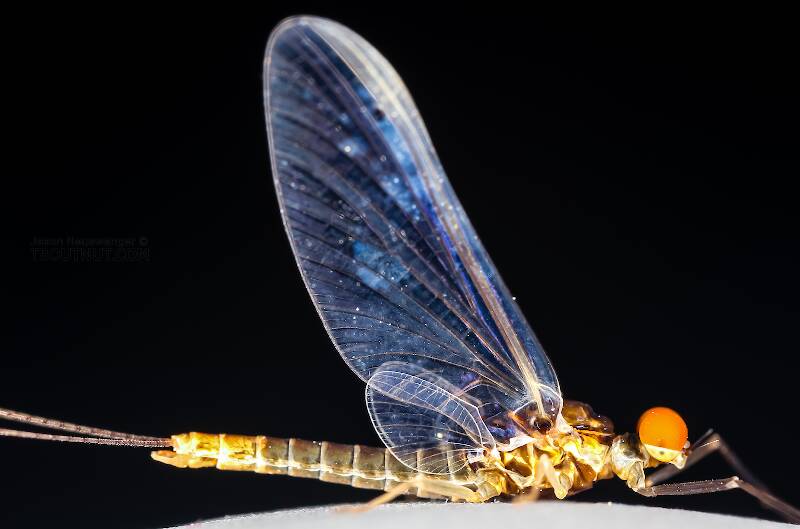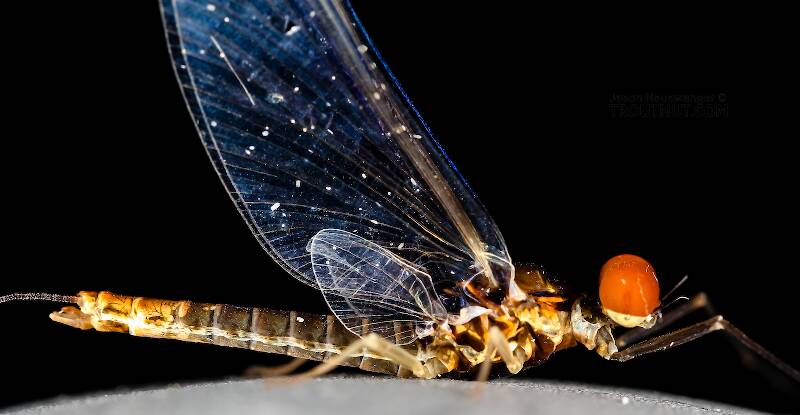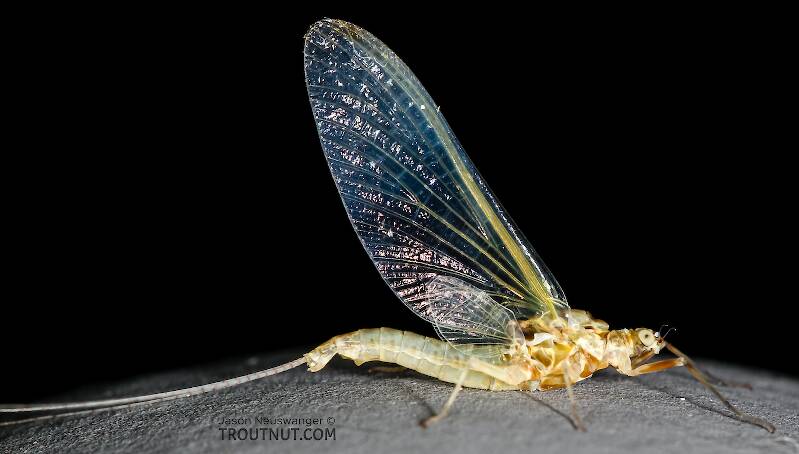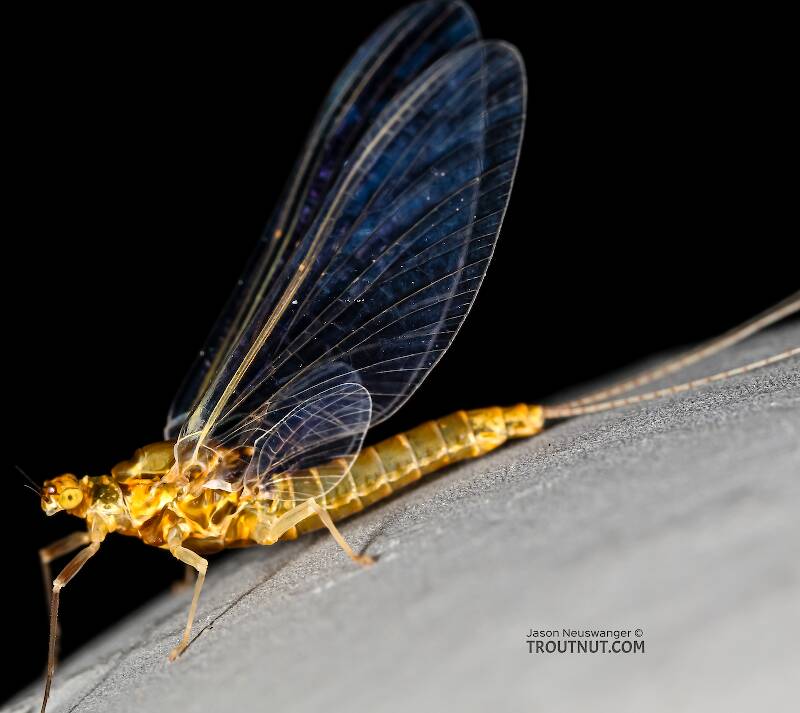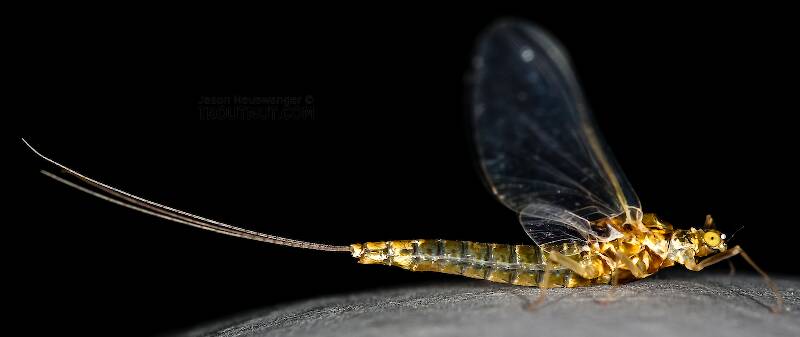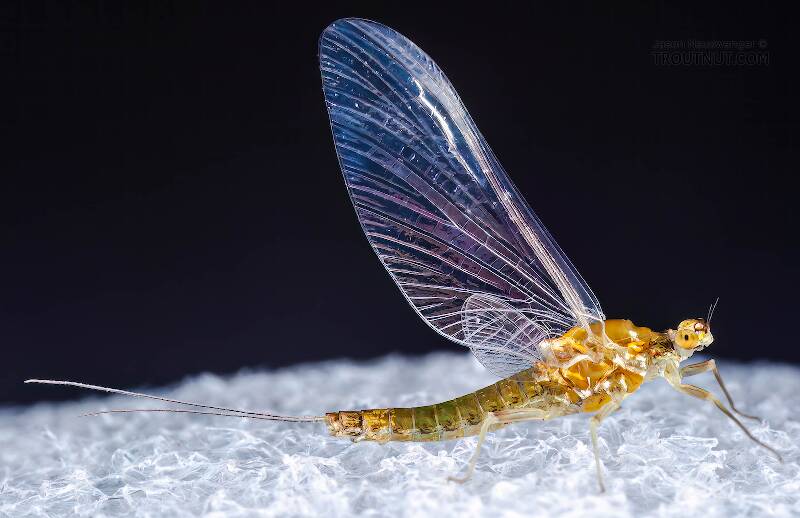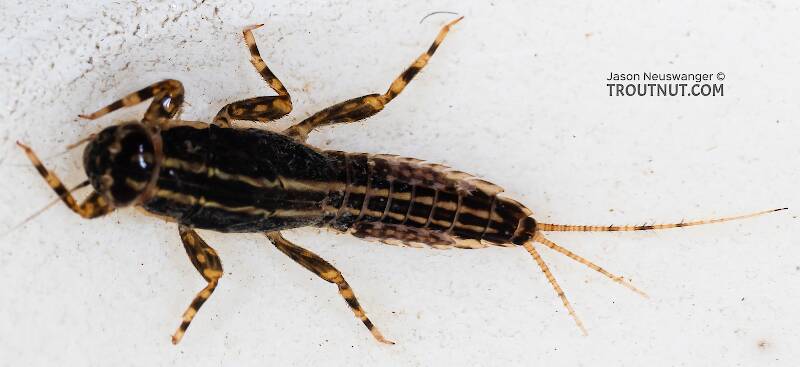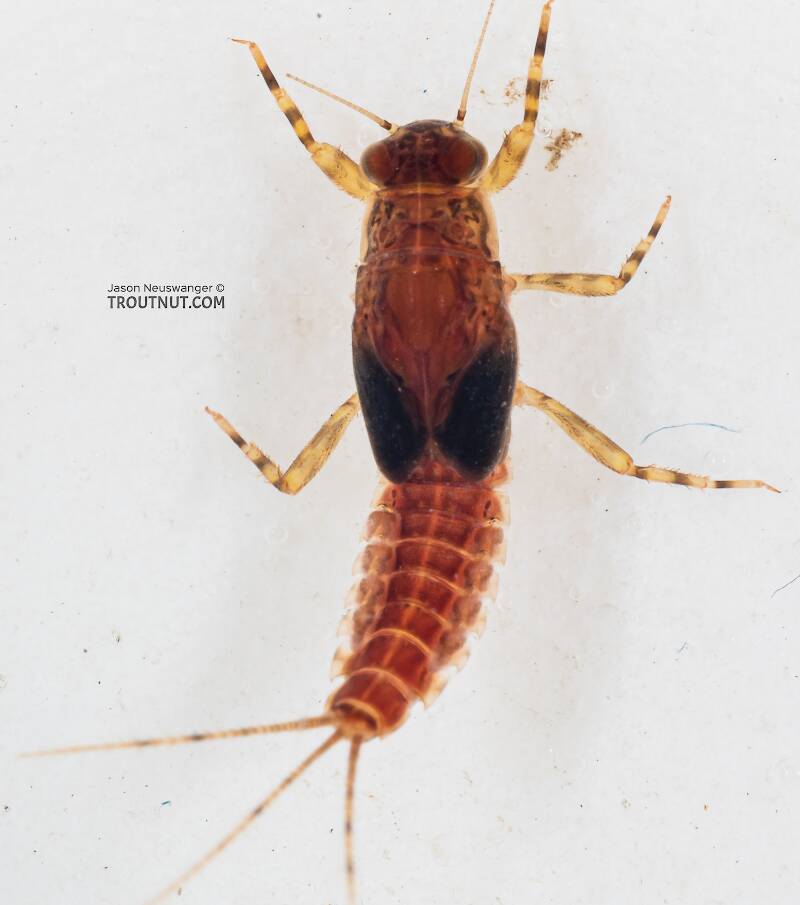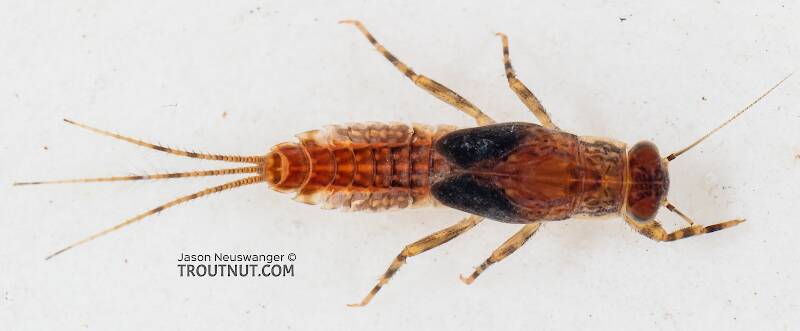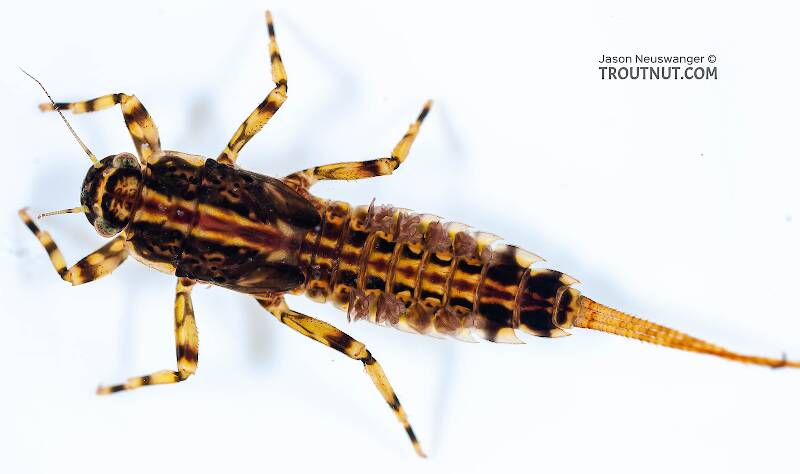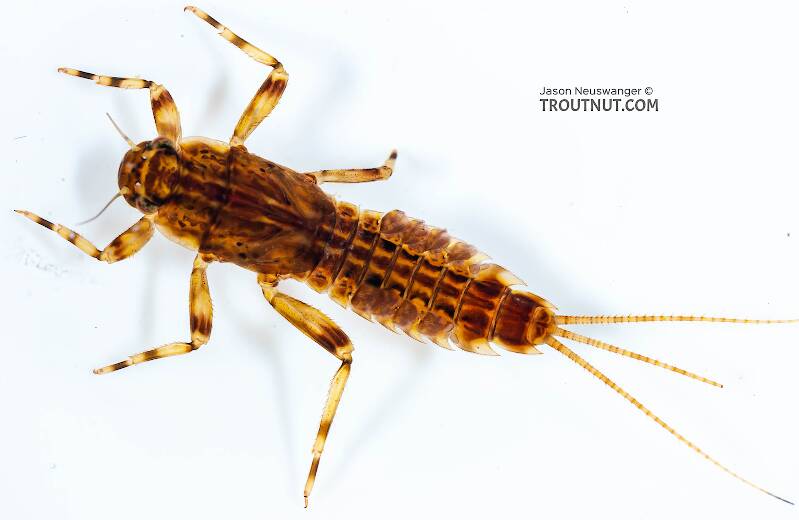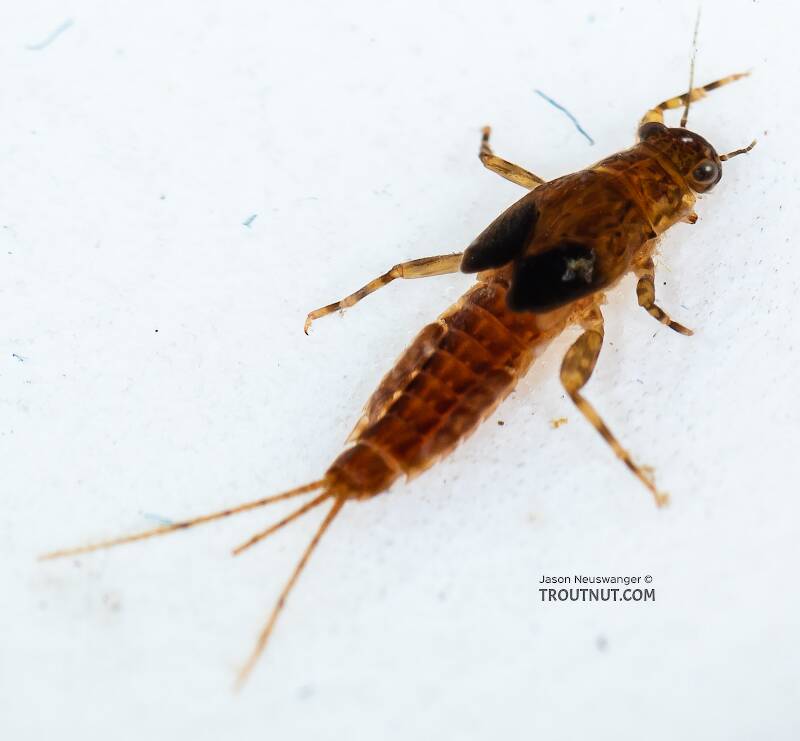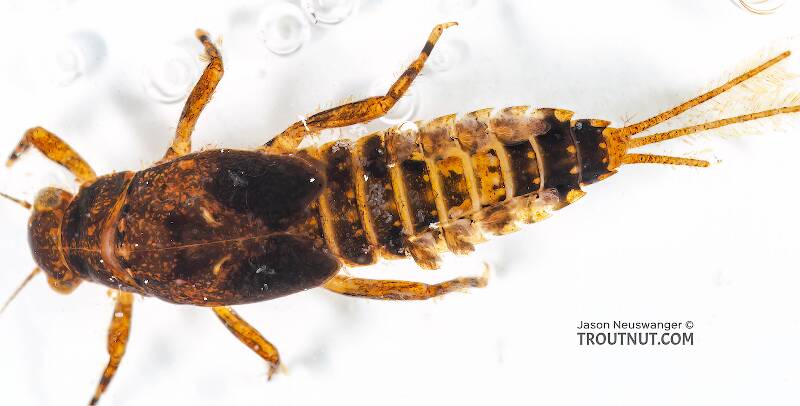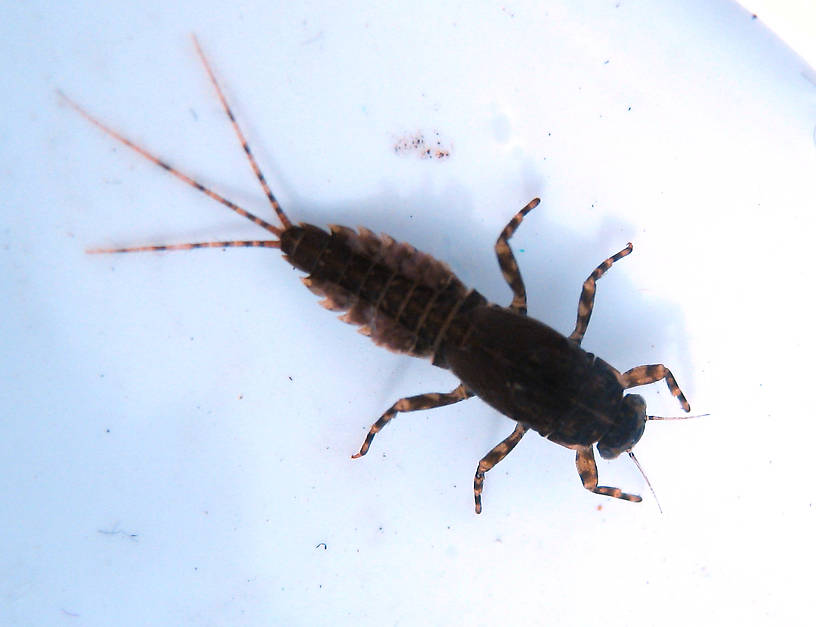
Blue-winged Olives
Baetis
Tiny Baetis mayflies are perhaps the most commonly encountered and imitated by anglers on all American trout streams due to their great abundance, widespread distribution, and trout-friendly emergence habits.
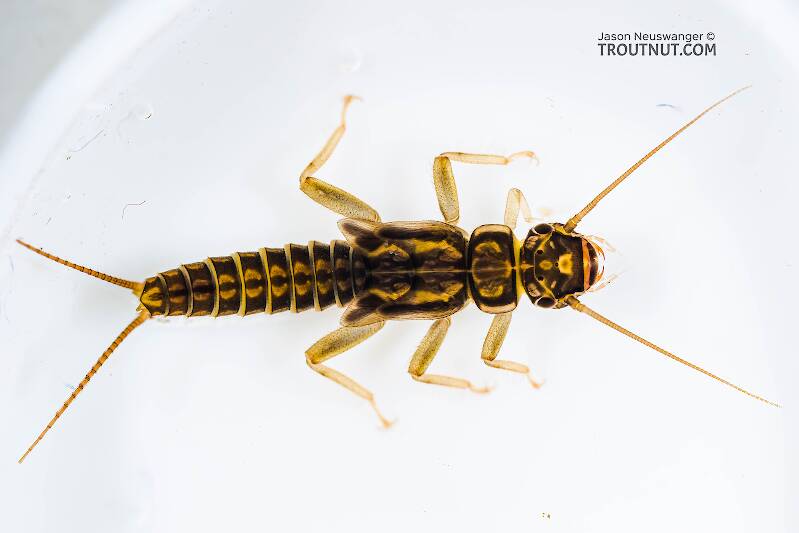

Mayfly Species Ephemerella excrucians (Pale Morning Duns)
Ephemerella excrucians or Pale Morning Dun usually follows its larger sibling Ephemerella dorothea infrequens with which it shares the same common name. What it often lacks in size by comparison is made up for with it's duration, often lasting for months with intermittent peaks. This close relationship with infrequens has led many anglers to confuse Pale Morning Dun biology with that of the multivoltine Baetidae species, having disparate broods that decrease in size as the season advances. Sharing the same common name has not helped to alleviate this misconception.
Until recently, Ephemerella excrucians was considered primarily an upper MidWestern species of some regional importance commonly called Little Red Quill among other names. Recent work by entomologists determined that it is actually the same species as the important Western Pale Morning Dun (prev.Ephemerella inermis), and the lake dwelling Sulphur Dun of the Yellowstone area, (prev.Ephemerella lacustris). Since all three are considered variations of the same species, they have been combined into excrucians, being the original name for the type species reported as far back as the Civil War. Angler speculation had simmered for some time that the stillwater loving Ephemerella lacustris was much more widespread, inhabiting more water types then previously thought and could account for many large sulfurish ephemerellids found in still to very slow water locations throughout the West. With the revisions, this discussion is now moot.
Ephemerella excrucians variability in appearance, habitat preferences, and wide geographical distribution are cause for angler confusion with the changes in classification. They can be pale yellow 18's on a large Oregon river, creamy orange 14's on western lakes and feeder streams, large olive green on CA spring creeks as well as tiny sulfur ones in many Western watersheds. Then there's the little Red Quill on small streams in Wisconsin. Yet, all are the same species.
Where & when
In 25 records from GBIF, adults of this species have mostly been collected during June (44%), April (24%), May (16%), and July (12%).
In 29 records from GBIF, this species has been collected at elevations ranging from 381 to 11453 ft, with an average (median) of 5351 ft.
Species Range
Hatching behavior
Spinner behavior
Time of day: Morning and again at dusk in the West; only dusk in the East, where they're not important
Habitat: See notes
Nymph biology
Diet: Detritus and algae
Current speed: Slow to fast in the West; medium to fast in the East
Substrate: All types, but prefer gravel and cobble with weed growth or the edges of weed beds in spring creeks
Physical description
Most physical descriptions on Troutnut are direct or slightly edited quotes from the original scientific sources describing or updating the species, although there may be errors in copying them to this website. Such descriptions aren't always definitive, because species often turn out to be more variable than the original describers observed. In some cases, only a single specimen was described! However, they are useful starting points.
Male Spinner
Wing length: 7-8.5 mm
A member of the Ephemerella invaria group; second joint of forceps not swollen apically. Eyes (in living male) egg-yellow. Vertex of head, and antennae, reddish brown. Dorsum of thorax reddish brown. Legs pale yellow; first tarsal joint of fore leg, all tarsal joinings of fore leg, and tips of all the tarsi, cloudy. Wings hyaline; venation wholly hyaline; a slight yellowish tinge on the costa of the fore wing. Dorsum of abdomen reddish brown, sometimes almost reddish black. Tails whitish, the joinings brown except near the tips. Second joint of forceps little if any swollen apically; no spines at the apex of the penes.
Described as E. semiflava
Body length 7 mm, wing length 8 mm
A species of the Ephemerella invaria group; second joint of forceps not swollen apically; nymph unknown.
Eyes of living male mustard yellow. Head yellowish, tinged with reddish brown near the ocelli. Thorax olive brown shaded with yellow; light yellowish brown near the scutellum; reddish brown shading anterior to the wing roots. Blackish transverse streak near the posterior margin of the prothorax; pleura and sternum light yellowish brown; an oblique stripe of pure yellow on the pleura from the base of the fore wing to the base of the fore leg. Legs light yellow, becoming whitish on the fore tarsi. Fore tibia about one and one-half times as long as the femur; tarsus about twice the length of the tibia. Wings hyaline; venation hyaline.
Abdomen yellowish olive brown; lateral rows of indistinct oblique brown stripes, more or less fused on tergites 8-10. Tergites 2 and 3 faintly blackish on the posterior margins. Tails white, with faint brownish joinings at the base. Genitalia very similar to Ephemerella excrucians. It is quite possible that this species may be synonymous with excrucians.
Nymph
The nymph is rather dark reddish brown in color; the head and thorax are irregularly mottled with light and dark areas, which are sometimes rather extensive on the pronotum. The lateral margins of the pronotum are pale. Legs blackish brown, the femora with three large pale areas; tibiae pale at apex and near the base; tarsi pale distally. Spines on the joints are very similar to E. mollitia (now a synonym of Ephemerella dorothea infrequens). Lateral extensions of the abdominal segments very well developed. Dorsal spines absent. A rather large pale spot on each side of the median line, on the posterior margin of each tergite. On the middle tergites the median line is often pale, sometimes wholly whitish. Rather extensive pale areas are often present just above the gills on these tergites, most pronounced on tergites 5 and 6. These markings are variable in different specimens. Tails yellowish brown, with several median and apical dark bands. Ventrally yellowish brown, the apical sternites and the lateral margins of the middle ones blackish brown. Traces of dark submedian oblique dashes on the anterior margins, and of dark dots nearer the center of the sternites, may be present.
Specimens of the Mayfly Species Ephemerella excrucians
2 Male Duns
5 Female Duns
3 Male Spinners
4 Female Spinners
10 Nymphs
Discussions of Ephemerella excrucians
Start a Discussion of Ephemerella excrucians
References
- Arbona, Fred Jr. 1989. Mayflies, the Angler, and the Trout. Nick Lyons Books.
- Caucci, Al and Nastasi, Bob. 2004. Hatches II. The Lyons Press.
- Knopp, Malcolm and Robert Cormier. 1997. Mayflies: An Angler's Study of Trout Water Ephemeroptera . The Lyons Press.
- Leonard, Justin W. and Fannie A. Leonard. 1962. Mayflies of Michigan Trout Streams. Cranbrook Institute of Science.
- Needham, James G., Jay R. Traver, and Yin-Chi Hsu. 1935. The Biology of Mayflies. Comstock Publishing Company, Inc.
- Schwiebert, Ernest G. 1955. Matching the Hatch. MacMillan Publishing Company.
- Swisher, Doug and Carl Richards. 2000. Selective Trout. The Lyons Press.
Mayfly Species Ephemerella excrucians (Pale Morning Duns)
Species Range
Common Names
Resources
- NatureServe
- Integrated Taxonomic Information System
- Global Biodiversity Information Facility
- Described by Walsh, Benjamin D., 1862: List of the Pseudoneuroptera of Illinois contained in the Cabinet of the writer, with descriptions of over forty new species, and notes on their structural affinities. Proceedings of the Academy of Natural Sciences of Philadelphia, vol. 14, no. 7-9. 361-402.


